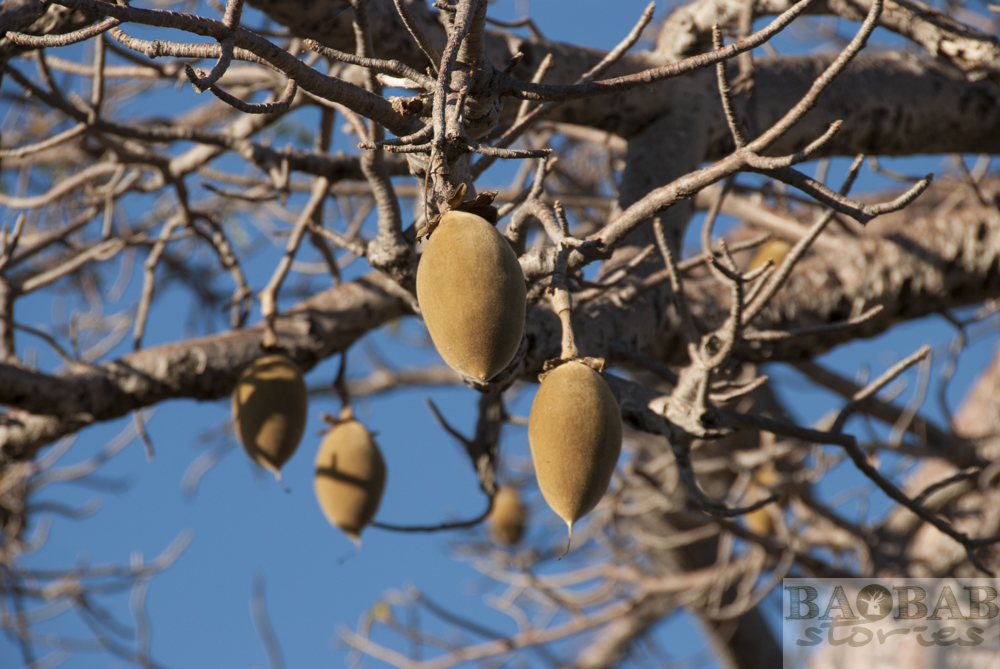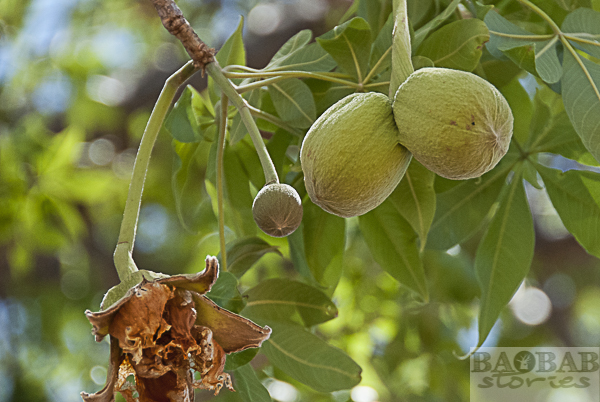
Baobab Flower
Yes, one can get curious information while walking the winding paths of life. At least every now and then. It so happened during one of my trips with Dr. Sarah Venter that we came across the topic of male and female baobabs.

Baobab Flower Opening
Baobab research
At that time she had been working with local communities on baobabs for more than a decade. While in the field she heard people talk about male and female baobabs. Being a baobab ecologist and researcher she was intrigued and – among other researchers – started to give this issue a closer look. And, as so many things on earth turn out, the story is not that simple with these trees.

Baobab Flower
Origin of the male and female baobab idea
So, where does this idea of both sexes in baobabs come from? That is quite intriguing. Baobabs are the oldest living angiosperms – meaning that they are the oldest flowering trees on earth these days. But that is just to give something to boast about. Local communities in rural areas where baobabs usually thrive in South Africa – that is in Limpopo in the far north – observed that some of the baobabs bear fruit and others do not – although all of them might flower once every year with the onset of the rainy season.

Baobab Fruit
Annual flowering of baobabs
The flowers do not last long – 24 hours at the most and after flowering they fall from the trees. Where the flowers hung on the trees one can see tiny baobab fruit forming. But not on all the trees to the same extent. This observation led people to conclude that there must be male and female baobabs – a phenomenon one can find manifold in the animal and plant kingdoms of our paradise. Observers based their “findings” on the behaviour they saw.

Baobab with Fruit
Are there male and female baobabs around?
Now, researchers try to determine whether that “male & female” issue with baobabs can be scientifically proven. They study the physical side, their morphology. And with that, things get even more interesting. To cut a long story short: There are no male and female baobabs – just baobabs.

Wilted Baobab Flower
There are no male and female baobabs
Not even male and female flowers because science has proven that the flowers are hermaphrodite or co-sexual. Meaning each flower has both – male and female – parts. Nevertheless, the flowers do not pollinate themselves. They need a certain exchange of pollen and therefore “supportive staff” in the form of hawk moth, bats or bush babies who make sure that pollination can take place.

Baobab flower buds
The beaviour of the trees led to misconception in observation
Therefore we can conclude that male trees are not really male trees but to the onlooker they behave like that. Science calls the “male” ones poor producers and the female ones, those bearing fruit, producers. But in the end, even the poor producers can carry fruit – but not as many as the producers each year.

Baobab Fruit

I read your blog. Having very use full information help me a lot. I will read more articles on your blog.
Thank you & all the best.